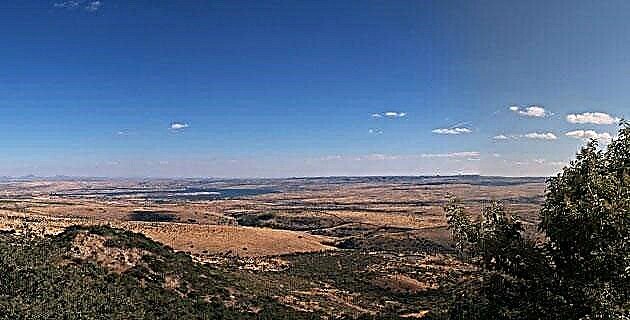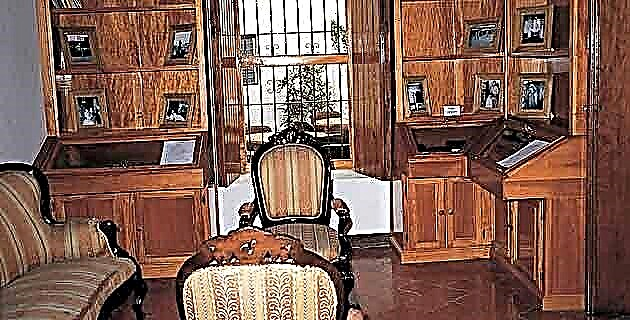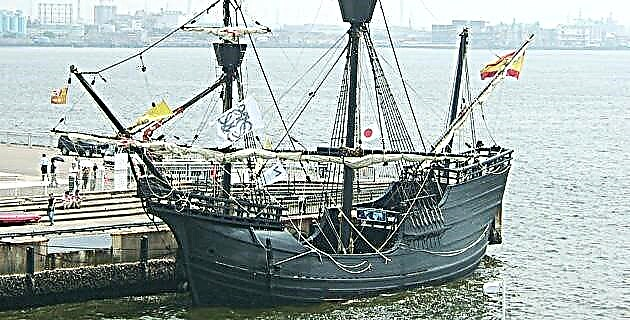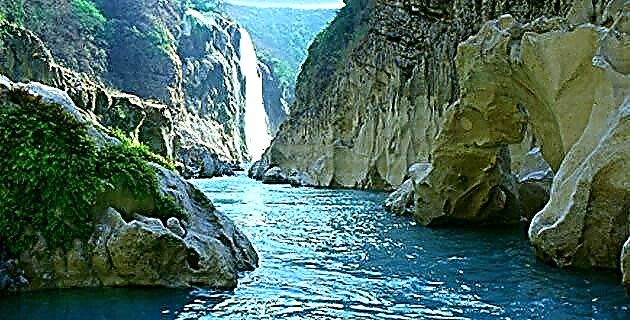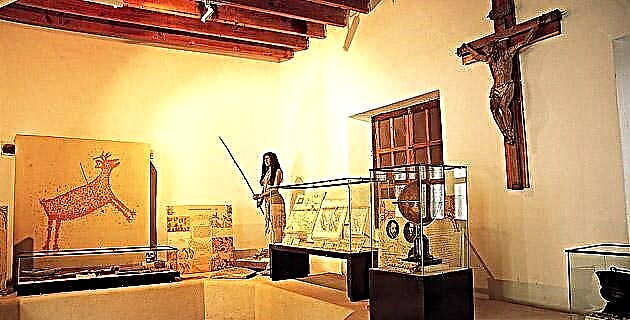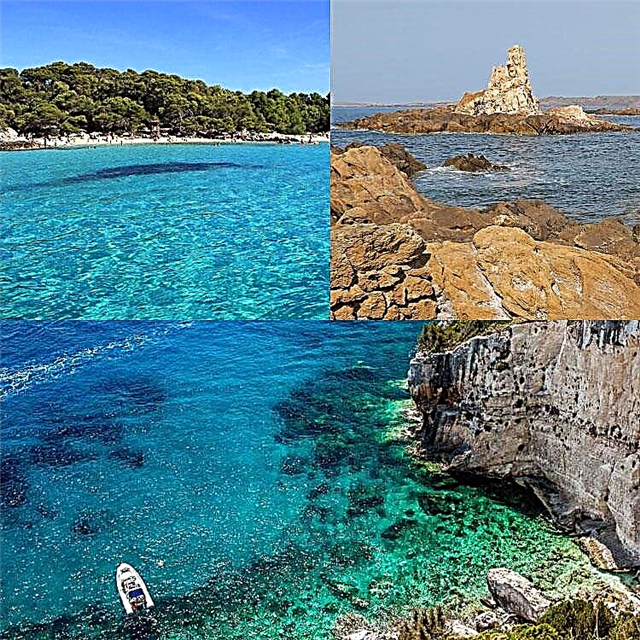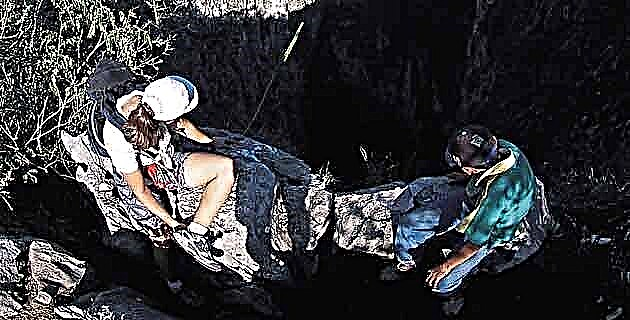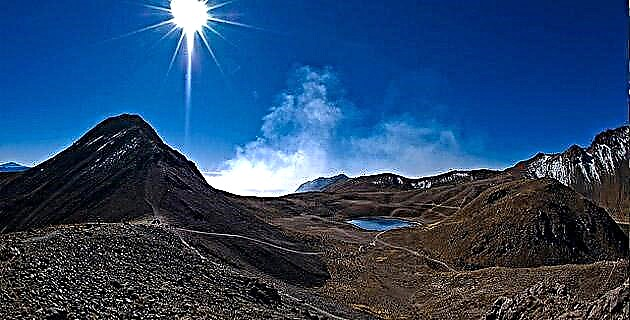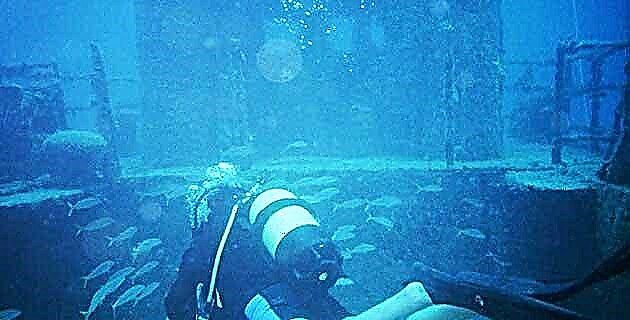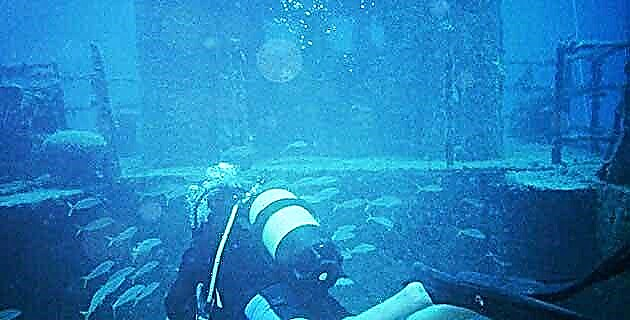
The sea has always been a vital communication bridge for humanity. For centuries, the Atlantic Ocean was the only link between the Old and New World.
As a result of the discovery of America, the Gulf of Mexico became an important scene for European navigation, especially that coming from the Spanish metropolis. The first vessels that made this crossing were caravels and galleons. Many of these ships met their end in Mexican waters.
The dangers faced by a ship that dared to cross the sea alone were innumerable. Perhaps the main threats of those times were storms and attacks by pirates, corsairs and buccaneers, who arrived attracted by the riches from America. In a desperate attempt to protect both its ships and the treasures they carried, Spain created in the 16th century the most significant navigation system of the time: fleets.
In the second half of the 16th century, the Crown ordered the departure of two annual fleets, that of New Spain and that of Tierra Firme, protected by a royal navy. The first was to leave in April for the Gulf of Mexico and the second in August for the Isthmus of Panama. Both had to winter in America and return on fixed dates to take advantage of the good weather. However, this facilitated the attacks of the enemies, who cunningly positioned themselves at strategic points and ambushed assaults by pirates and buccaneers, there were other reasons why a ship or a fleet could sink, such as the lack of skill of the pilots and imprecision in maps and navigation instruments.
Other factors were the fires or explosions caused by the gunpowder that was carried on board, and the loss of quality in both boats and crew that occurred over the years.
The representation of the Gulf of Mexico in the charts and navigation maps of the 16th and 17th centuries did not register important changes. The islands near Yucatan continued to be represented in an exaggerated way until the 18th century, perhaps in order to alert the sailors of the dangers they contained, since navigating through that area was difficult due to the presence of keys and reefs, Gulf currents, cyclones and norths and the shallow waters near the coast. The sailors baptized some of the reefs with names like "take-sleep", "open-eyes" and "salt-if-you can."
PIRATES, CORSAIRS AND BUCANERS. As shipping lanes spread across the world, pirates, corsairs, and buccaneers expanded their networks of operation as well. His main need was to find an island or a bay where to establish his base, to be able to repair his ships and to supply himself with everything necessary for his assaults. The Gulf of Mexico was an ideal place due to its large number of islands and the intense traffic of ships that crossed those waters.
The most famous adventurers were the English, although countries such as France, Holland and Portugal also made their contribution to the piracy of the time. Some pirates acted supported by their governments, or by the nobility that sponsored them to keep a good part of the loot later.
Two of the most devastated Mexican ports were San Francisco de Campeche and Villa Rica de la Vera Cruz. Among the pirates who operated in the Gulf of Mexico are the English John Hawkins and Francis Drake, the Dutchman Cornelio Holz called “Pata de Palo”, the Cuban Diego “El Mulato”, Laurens Graff better known as Lorencillo and the legendary Grammont. The presence of Mary Read stands out, one of the few women who practiced piracy, despite the restrictions that existed at that time for the female sex.
RESCUE ATTEMPTS. Every time a ship was wrecked, the nearest authorities or the captain of the ship himself had to organize rescue operations, which consisted of locating the wreckage and hiring boats and divers to take on the task of recovering as much as possible. lost at sea. However, they did not usually have very good results due to the difficulties of the work itself and the corruption and inefficiency of the Spanish authorities. Many times it was possible to recover part of the artillery.
On the other hand, it was common for the crew of a wrecked ship to steal the wealth that it carried. If the accident occurred near a coast, the locals came using any means, in an attempt to obtain part of the goods transported, especially and of course the gold and silver.
Several months and even years after a vessel had sunk, a special permit could be requested from the Crown to search for its cargo. This became the task of the Assentists. The seat was a contract by which public functions were assigned to private persons outside the royal administration. This person promised to recover the submerged wealth in exchange for a percentage.
A famous assentist of the time was Diego de Florencia, a Cuban resident whose family served the Spanish monarchy for several generations. Documents located in the Parish Archives of the Cathedral of Havana indicate that at the end of 1677 this captain requested a concession to recover the cargo of the Galleon Nuestra Señora del Juncal, one of the two flagships of the New Spain Fleet of 1630. commanded by Captain General Miguel de Echazarreta and lost in the Campeche Sound in 1631. He also requested authorization to search for any ship that had been wrecked in the Gulf of Mexico, Apalache and the Windward Islands. Apparently he couldn't find anything.
THE FLEET OF NEW SPAIN, 1630-1631. It is considered that one of the most important shipments of the colonial period was the one that was on board precisely the Fleet of New Spain that set sail from Cádiz in 1630, under the command of Captain Echazarreta, and sank in hearty waters a year later.
Information located in archives of Mexico, Cuba and Spain has allowed us to begin to reconstruct the events that surrounded the tragedy suffered by the ships that made up this fleet, including its flagships, the galleons called Santa Teresa and Nuestra Señora del Juncal. The latter is still the object of greed among treasure hunters around the world, who only seek its economic benefit and not the true wealth that is historical knowledge.
HISTORY OF THE FLEET. It was July 1630 when the New Spain Fleet set sail from the port of Sanlúcar de Barrameda with a final destination to Veracruz, accompanied by an escort made up of eight galleons and a patache.
Fifteen months later, in the fall of 1631, the New Spain Fleet left San Juan de Ulúa for Cuba to meet the Tierra Firme Fleet and together to return to the Old Continent.
A few days before his departure, Captain Echazarreta died and was replaced by Admiral Manuel Serrano de Rivera, and the Nao Nuestra Señora del Juncal, who had come as Captain, returned as Admiral.
Finally, on Monday, October 14, 1631, the fleet went to sea. A few days later it faced a north that turned into a terrible storm, which caused the ships to disperse. Some sank, others ran aground and still others managed to reach the nearby shores.
Testimonies and documents located in national and foreign archives indicate that the rescued survivors were taken to San Francisco de Campeche and from there to Havana, to travel back to their country with the Tierra Firme Fleet, which remained in Cuba waiting of damaged ships.
WORLD HERITAGE. With the passage of time, each of the ships that met its end in the waters of the Gulf of Mexico has become a page in history that it is up to underwater archeology to investigate.
The vessels that lie in Mexican waters are full of secrets to discover and treasures that go far beyond the economic. This makes Mexico one of the countries with one of the richest submerged cultural legacies in the world, and gives it the responsibility to protect and investigate it in a scientific and systematic way to share it with all humanity.

